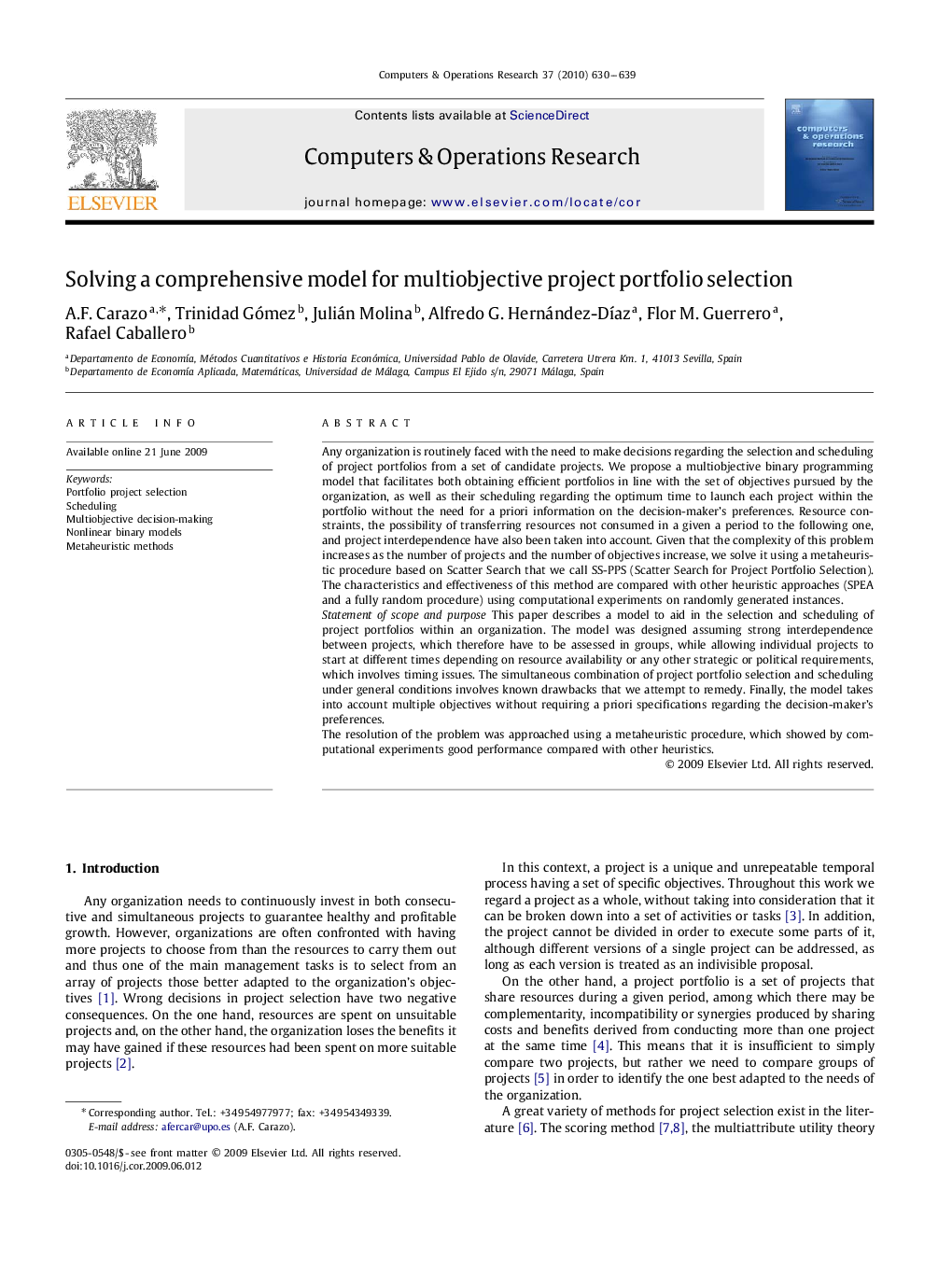| کد مقاله | کد نشریه | سال انتشار | مقاله انگلیسی | نسخه تمام متن |
|---|---|---|---|---|
| 473768 | 698813 | 2010 | 10 صفحه PDF | دانلود رایگان |

Any organization is routinely faced with the need to make decisions regarding the selection and scheduling of project portfolios from a set of candidate projects. We propose a multiobjective binary programming model that facilitates both obtaining efficient portfolios in line with the set of objectives pursued by the organization, as well as their scheduling regarding the optimum time to launch each project within the portfolio without the need for a priori information on the decision-maker's preferences. Resource constraints, the possibility of transferring resources not consumed in a given a period to the following one, and project interdependence have also been taken into account. Given that the complexity of this problem increases as the number of projects and the number of objectives increase, we solve it using a metaheuristic procedure based on Scatter Search that we call SS-PPS (Scatter Search for Project Portfolio Selection). The characteristics and effectiveness of this method are compared with other heuristic approaches (SPEA and a fully random procedure) using computational experiments on randomly generated instances.Statement of scope and purposeThis paper describes a model to aid in the selection and scheduling of project portfolios within an organization. The model was designed assuming strong interdependence between projects, which therefore have to be assessed in groups, while allowing individual projects to start at different times depending on resource availability or any other strategic or political requirements, which involves timing issues. The simultaneous combination of project portfolio selection and scheduling under general conditions involves known drawbacks that we attempt to remedy. Finally, the model takes into account multiple objectives without requiring a priori specifications regarding the decision-maker's preferences.The resolution of the problem was approached using a metaheuristic procedure, which showed by computational experiments good performance compared with other heuristics.
Journal: Computers & Operations Research - Volume 37, Issue 4, April 2010, Pages 630–639